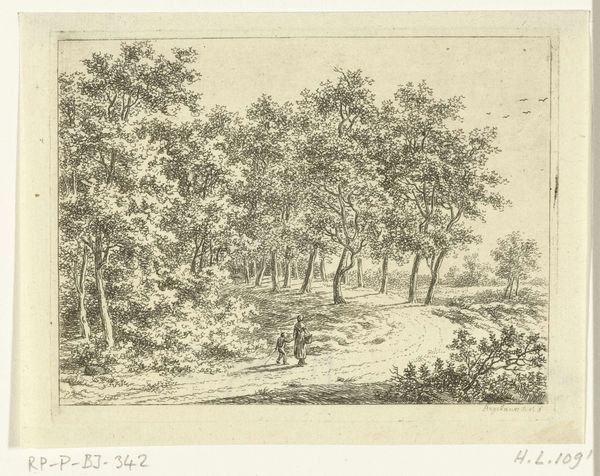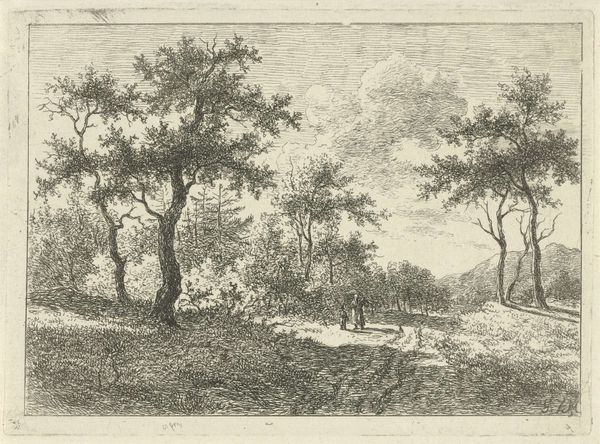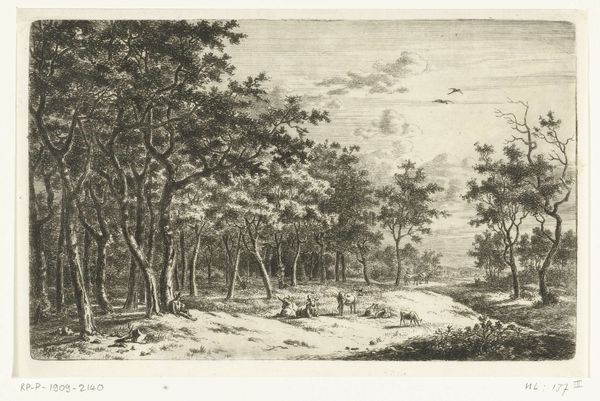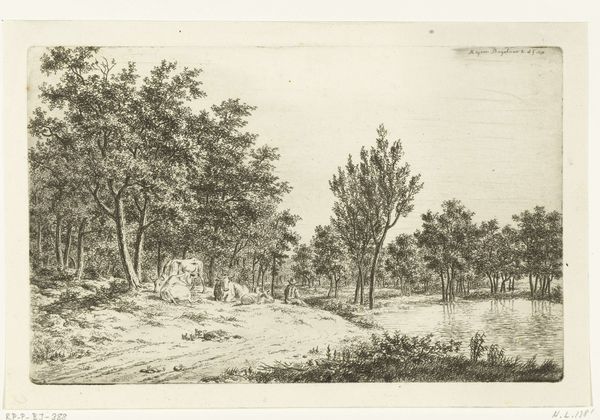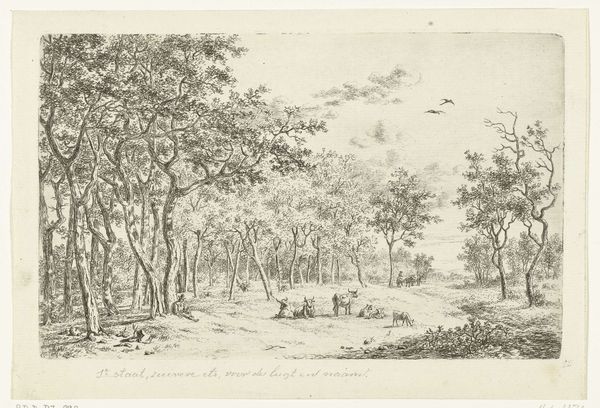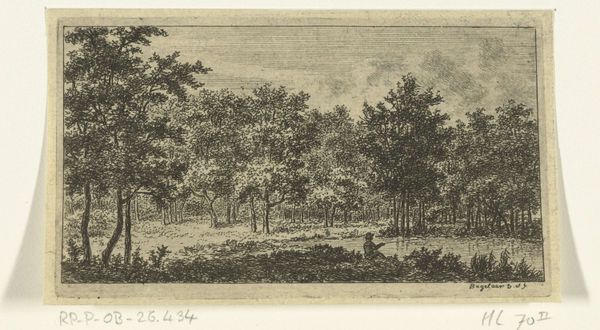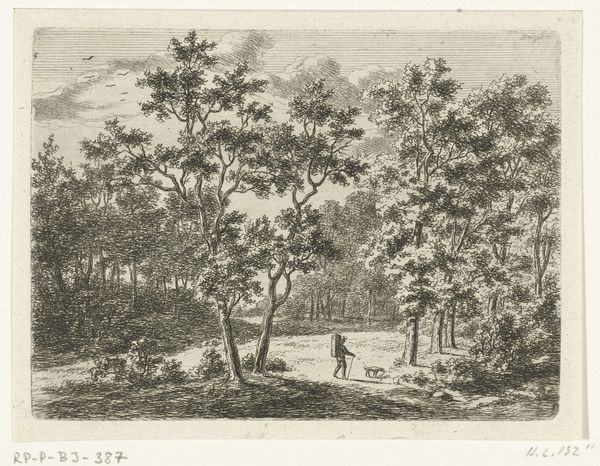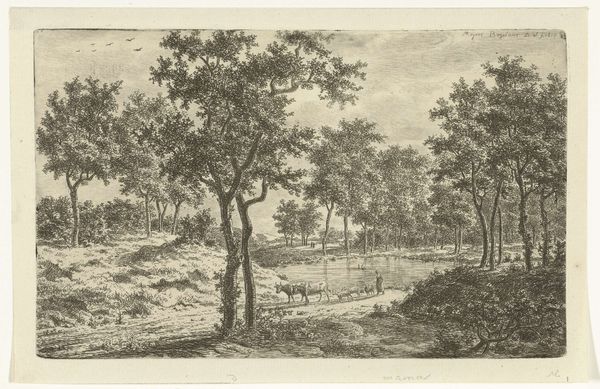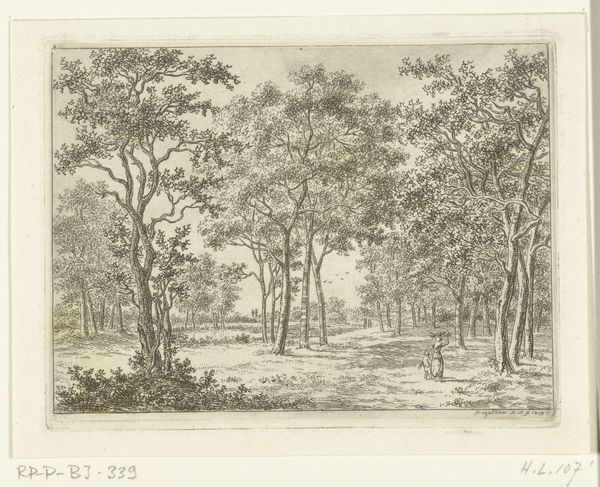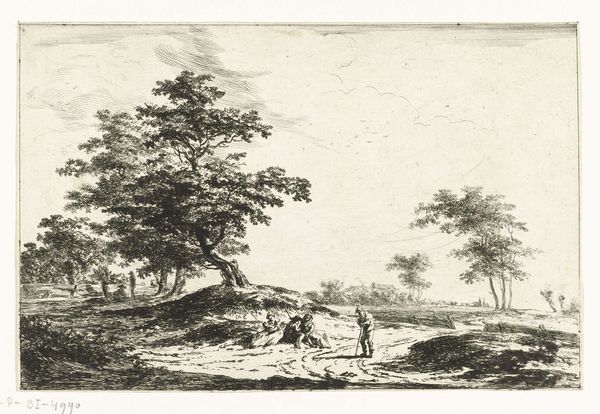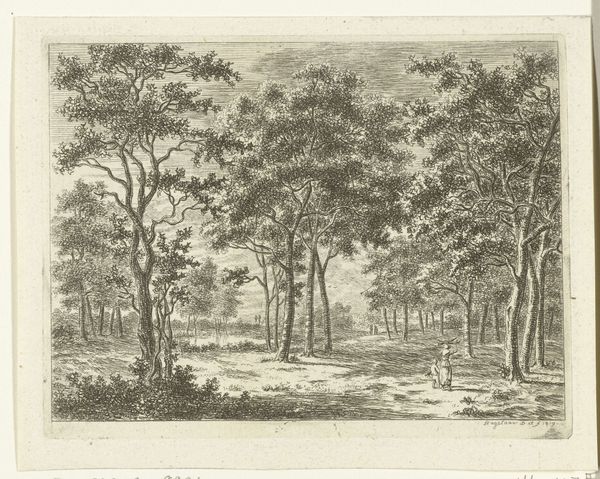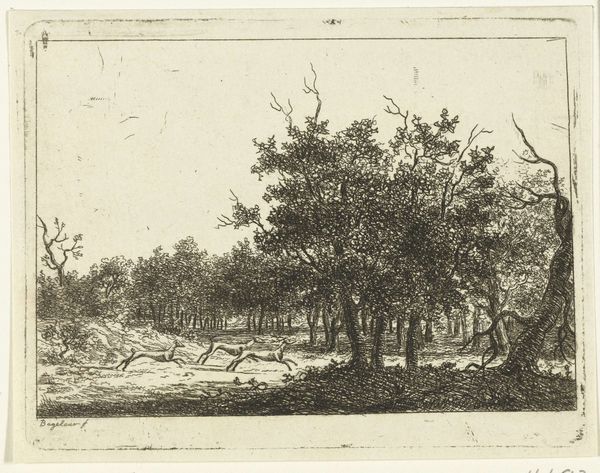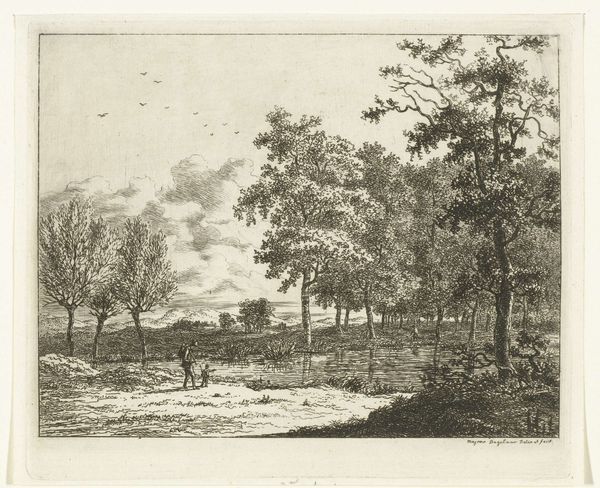
drawing, print, etching
#
drawing
# print
#
etching
#
landscape
#
etching
#
romanticism
Dimensions: height 95 mm, width 120 mm
Copyright: Rijks Museum: Open Domain
Curator: What immediately strikes me about this etching is the texture. It's called "Landschap met een liggende en een staande man", or "Landscape with a reclining and a standing man," and was made sometime between 1798 and 1837. The artist is Ernst Willem Jan Bagelaar. Editor: There's an immediate drama despite the mundane title; a slightly unsettling stillness pervades it, punctuated by the sharp, directional gesture of the standing man. Curator: Indeed, it encapsulates early Romantic notions of the pastoral—but also reveals its artifice. The etching, produced through labor-intensive processes, transforms the raw materials of copper and ink into this picturesque scene. We must consider the division of labor within printmaking workshops and how Bagelaar navigated those social and economic structures. Editor: Absolutely. Look at how Bagelaar has structured the composition; the dense trees frame a clearing, drawing the eye toward a background obscured in light, an idealogical and symbolic vanishing point of idealized nature and beckoning toward some type of destiny for the two central figures.. Curator: Let's not ignore the medium. The labor of creating the etching plate, the materials sourced, and the consumption patterns surrounding prints in that era are crucial. Was it a luxury item? A mass-produced image circulated among a specific social class? These questions ground the art within its lived reality. Editor: The crisp lines lend themselves to a certain visual storytelling. Consider the semiotic possibilities – the standing man is indicating or commanding something to the reclining figure in the context of nature or perhaps an economic exchange of direction to labour. Curator: We might delve into the conventions of printmaking and the limitations and possibilities afforded by etching as a technique. Consider how decisions regarding line weight, texture, and composition reveal both the artist's intentionality and the constraints of the craft itself, within the dynamics of workshops in that era. Editor: This really highlights that balance of detail and form which can pull you deeper into contemplation. Curator: Absolutely, and it underscores the inherent tensions in reconciling the idealized image with the real conditions of its production and reception. Editor: So, an artwork like this gives us a fascinating crossroads where materiality meets visual storytelling.
Comments
No comments
Be the first to comment and join the conversation on the ultimate creative platform.
